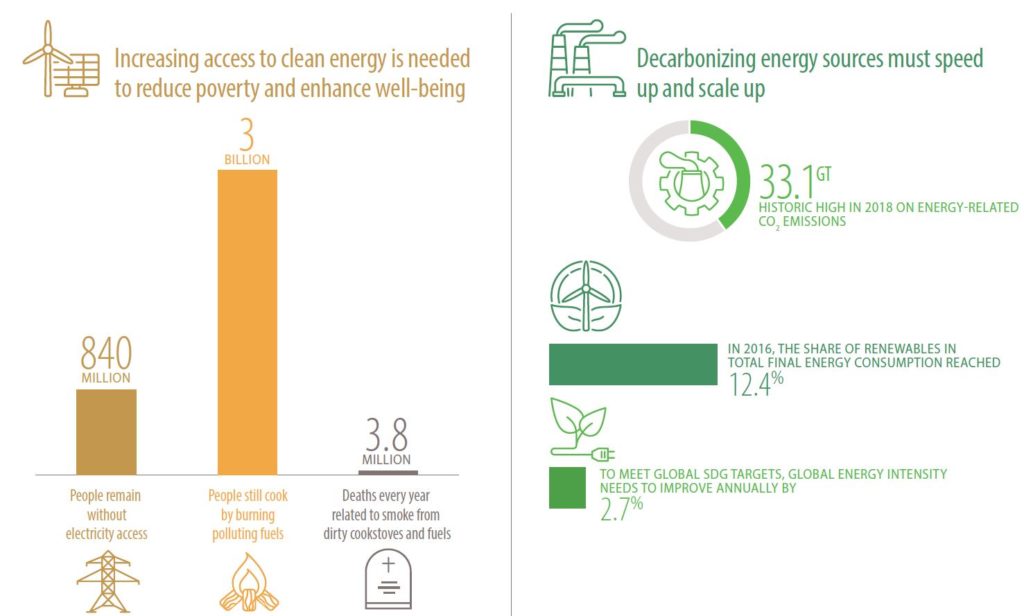“We know the world we want,” the High-level political forum on sustainable development affirms in the Political Declaration Gearing up for a decade of action and delivery for sustainable development.
Sustainable Development Goals, as defined by the 2030 Agenda for sustainable development, paint a colorful world. A world where there is no poverty and hunger, where everyone can have access to health, education, justice, energy, clean water and decent jobs. A world with no conflicts and inequalities, where global partnerships work together for sustainable development and inclusive economic growth, fostered by innovation. A resilient planet where nature, including animals and resources, are protected from environmental degradation and pollution. A world that acts urgently to face the climate change challenge. But this painting, with just over 10 years to go, is not on track to be finished by 2030.
The Declaration Gearing up for a decade of action and delivery for sustainable development was adopted at the UN Summit on the Sustainable Development Goals (SDGs) held in New York on September 24 and 25, 2019. The Summit took place during the opening week of the 74th session of the UN General Assembly and was the first High-level Political Forum on Sustainable Development (HLPF) to convene under the auspices of the UNGA since the adoption of the 2030 Agenda for Sustainable Development and its 17 Sustainable Development Goals in September 2015.
At the SDGs Summit 2019, world leaders announced more than 100 “SDGs Acceleration Actions” – voluntary initiatives undertaken by different categories of stakeholders – and renewed their commitment to the Agenda. However, leaders also had to recognize that, despite some progress, implementation must be accelerated and there is a need for more pledges to make “the coming decade one of action and delivery”. UN Secretary-General Antonio Guterres announced an “annual platform” to drive the decade of action, the first of which will take place in September 2020 in the context of the UN’s 75th anniversary.
The Future is Now
“Our world as we know it and the future we want are at risk. Despite considerable efforts these past four years, we are not on track to achieve the Sustainable Development Goals by 2030.” The introductory words of Guterres, in the foreword to The Future is Now: Science for Achieving Sustainable Development, are clear. The report, officially launched at the Summit, is the first quadrennial Global Sustainable Development Report prepared by an independent group of 15 scientists appointed by the United Nations Secretary-General to inform the HLPF.
In the last two decades, extreme poverty and child and neonatal mortality have been reduced; access to electricity and safe drinking water improved; and the coverage of terrestrial and marine protected areas expanded. Nonetheless – according to the report – several dimensions with cross-cutting impacts across the 2030 Agenda are not only behind schedule but are even moving in the wrong direction: inequalities are rising, climate is changing faster and faster, biodiversity losses are increasing, and waste production is overwhelming.
Everything has to change for our planet to stay the same
António Guterres, Secretary-General of the United Nations
Each goal (and target) should not be seen as an isolated system: “The most efficient – or sometimes the only – way to make progress on a given target is to take advantage of positive synergies with other targets while resolving or ameliorating the negative trade-offs with yet others,” the report reads, and identifies six “entry points” to which governments and public authorities should devote special attention and resources to accelerate the implementation of the Agenda.
The six “entry points” – described below – should be addressed through four “levers of change”, as affirmed by Peter Messerli and Endah Murniningtyas, Co-Chairs of the Independent Group of Scientists that realized the report: “We consider governance, business and finance, individual and collective behaviour, and science and technology to be crucial levers for transforming vicious into virtuous circles.”
1. Human well-being and capabilities
“Human well-being is at the core of transformations towards sustainable development.” This is not only about reaching one of the development goals: human well-being, including health, education, knowledge, voice and many other aspects in addition to material well-being, is a prerequisite for a positive social development with consequences on the whole system.
Improvements have been reached in life expectancy, education and quality of life in the last decades, but in many other aspects the world is falling short. Authors of the report ask for investments “so that all people are empowered and equipped to shape their lives and bring about collective change.”
2. Sustainable and just economies
To fulfil the Agenda, and avoid the risk of reversing progress achieved in the last two decades, the current (unsustainable) development model must change, “breaking away from current practices of growing first and cleaning up later.” Economic growth must be decoupled from environmental degradation, while at the same time, we have to reduce social and gender inequalities in wealth, income and access to opportunities. The report suggests introducing a new sustainable development investment label promoted by the UN, in order to encourage and reward investment in industries and financial markets that advance sustainable development and discourage investment in those that do not.
3. Food systems and nutrition patterns
The food and energy systems are critical areas of action: both are pushing the Earth towards environmental tipping points but, at the same time, more food and energy are needed for the health and well-being of the world’s growing population. Today’s global food system is unsustainable. On the one hand, 820 million people are still undernourished and approximately 2 billion people suffer from food insecurity. On the other hand, obesity rises and one third of the food produced is lost or wasted. Moreover, the sector’s climate and environmental impacts are too high, as it is responsible for nearly 1/3 of global greenhouse gas emissions. The report calls countries to take responsibility for the entire value chain related to their food consumption in order to improve quality, build resilience and reduce environmental impact. Moreover, developed countries should support developing countries build sustainable agricultural growth.

4. Energy decarbonization and universal access
Similarly, we must transform the current energy system. On the one hand, close to 1 billion people are without access to electricity and more than 3 billion people rely on (highly polluting) solid fuels for cooking, causing an estimated 3.8 million premature deaths each year. Moreover, 650 million will remain without electricity in 2040, according to projections. On the other hand, electricity generation, heat production and transport rely heavily on fossil fuels, and are responsible for about 70% of total GHG emissions. As the demand for energy is expected to increase by 25% by 2040, faster decarbonization and energy efficiency are needed, in order to combine universal access to energy with the goals set by the Paris Agreement to control climate change.

5. Urban and peri-urban development
Cities are growing and by 2050 they will host about 70% of the global population, producing 85% of total economic output. This entails important environmental consequences, as the land occupied by cities in developing countries will triple by then and, in many cases, urbanization proceeds without adequate planning. According to the report, the Agenda will require more compact, resilient and efficient cities, that are better served by quality public transports and other infrastructure, social services and pro-poor policies.

6. Global environmental commons
The global environmental commons – such as the atmosphere, rainforests and oceans – are degrading and over-exploited. 75% percent of Earth’s land surface has been significantly altered, 66% of the ocean is experiencing increasing cumulative impacts, and over 85% of wetlands have been lost. The trend must be reversed, as the commons are vital for human survival and well-being. The report calls governments to assess environmental externalities and change patterns of use through pricing, transfers, regulation and other mechanisms.
The role of science
As the title of the report highlights, science has a critical role to play as “scientific knowledge allows for the identification of critical pathways to brake the pattern.” Scientific information for sustainable development must feed into policy design, incentives and actions. The implementation of the SDGs would be accelerated by scaling up financial support to mission-oriented research, and by new cross-border and inter-disciplinary scientific collaboration networking that involves the global South.
In all of those areas, scientific expertise and innovation can be brought to bear and yield impressive results, but the determining factor will always be political will
Gro Harlem Brundtland, Former Prime Minister of Norway, former Director-General of the WHO and member of The Elders
A detailed and updated analysis of the progress of SDGs, with data and infographics, is available in The Sustainable Development Goals Report 2019.







